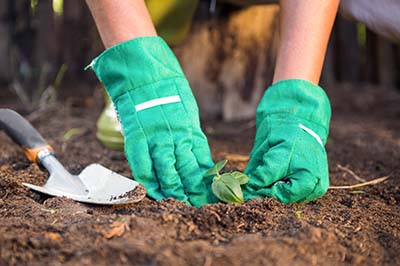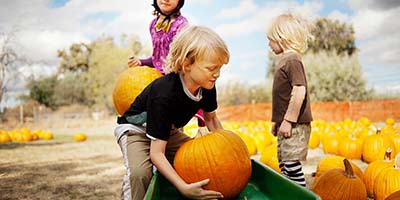

Vegetables: Start seeds indoors for cool-weather crops like broccoli, cabbage, and kale in early spring. Directly sow beets, carrots, lettuce, and radishes outdoors in late March or early April. Once the threat of frost has passed (late April to early May), plant tomatoes, peppers, beans, and squash.
Flowers: Hardy perennials such as hostas and daylilies can be planted in early spring. For annuals, start marigolds, zinnias, and petunias once the ground has warmed up in late April.
Trees and Shrubs: Early spring is the perfect time to plant dogwoods, redbuds, and azaleas, which thrive in cooler mountain temperatures.
Vegetables: Start cool-season crops like lettuce, spinach, and peas in February to March. Warm-weather crops such as tomatoes, cucumbers, and peppers can be transplanted in mid-April once the soil warms.
Flowers: Plant daffodils and tulips in early spring for colorful blooms. In April, add sun-loving annuals like impatiens and begonias to your garden.
Trees and Shrubs: Plant flowering shrubs like azaleas, rhododendrons, and gardenias in early spring to allow root establishment before summer heat.
Vegetables: Direct sow peas, lettuce, and radishes in February, and begin planting tomatoes, cucumbers, and melons in March. Coastal gardeners can start early with okra, corn, and sweet potatoes by late March.
Flowers: Add bright summer annuals like cosmos and marigolds in early March. Coastal gardens are also ideal for tropical plants like hibiscus, which can be planted after the last frost.
Trees and Shrubs: Early spring is a great time to plant citrus trees like lemons and oranges, which thrive in the warm coastal climate.
Vegetables: In early summer, continue harvesting spring crops. By June, plant heat-loving vegetables such as beans, cucumbers, and melons. In July, start planning for fall crops like broccoli and cabbage by starting seeds indoors.
Flowers: Heat-tolerant flowers like sunflowers, coneflowers, and black-eyed Susans perform well in the summer heat.
Herbs: Herbs such as basil, oregano, and thyme thrive in mountain gardens during summer.
Vegetables: Keep planting okra, tomatoes, and peppers in early summer. In July, direct sow fall crops like carrots and collard greens.
Flowers: Heat-resistant flowers like zinnias and lantana perform well through the hottest part of summer. Plant coleus and impatiens in shaded areas.
Herbs: Basil, rosemary, and mint are easy to grow and withstand the summer heat in Georgia’s Piedmont region.
Vegetables: Coastal regions can grow heat-tolerant crops all summer. Plant okra, eggplant, and sweet potatoes in June, and start seeds for fall crops like broccoli and cauliflower in mid-July.
Flowers: Tropical flowers such as hibiscus, plumeria, and bougainvillea thrive in the coastal heat. Plant these for vibrant, long-lasting blooms.
Herbs: Herbs like lemongrass and basil thrive in coastal gardens and can handle high temperatures and humidity.
Vegetables: Start planting cool-season crops like spinach, lettuce, kale, and radishes in late August or early September. This is also the time to transplant broccoli, cauliflower, and Brussels sprouts.
Flowers: Plant fall-blooming perennials like chrysanthemums and asters. These plants can provide vibrant color throughout the autumn.
Bulbs: Fall is ideal for planting spring-flowering bulbs such as daffodils and tulips.
Vegetables: Plant leafy greens like mustard, turnip greens, and lettuce in early September. Cool-season crops such as carrots and radishes can be directly sown in late August for a fall harvest.
Flowers: Mums, pansies, and violas can be planted in the fall for colorful blooms that last into early winter.
Bulbs: Now is the time to plant bulbs like hyacinths and crocuses that will bloom in early spring.
Vegetables: Cool-weather crops such as kale, spinach, and Swiss chard can be planted in September. Coastal gardeners can enjoy an extended growing season, allowing for a second round of tomatoes or beans.
Flowers: Plant marigolds, petunias, and pansies in the fall for vibrant color that continues into the cooler months.
Herbs: Start cilantro, parsley, and dill in the fall, as they prefer cooler temperatures and will flourish through the winter in the coastal climate.
Vegetables: While outdoor planting is minimal in the winter, prepare your garden by amending the soil with compost. You can plant garlic and shallots in the late fall for an early spring harvest.
Flowers: Mulch around perennials like hostas and ornamental grasses to protect them from frost. Some cold-hardy annuals like pansies can withstand light freezes.
Indoor Gardening: Start herbs like parsley, basil, and chives indoors to grow throughout the winter months.
Vegetables: Plant garlic and onion sets in the late fall for a spring harvest. Winter is also the perfect time to prep your garden for spring planting by adding compost and cover crops like clover or ryegrass.
Flowers: Pansies, violas, and snapdragons can be planted in early winter for continued color through mild cold spells.
Indoor Gardening: Grow herbs or microgreens indoors, which can thrive in the milder winter months.
Vegetables: Winter is still an active growing season on the coast. Plant cool-season crops like carrots, kale, and lettuce for harvests through the winter. Garlic and onions also thrive when planted in winter.
Flowers: Winter annuals such as pansies and violas will continue blooming through the mild coastal winter. Plant cold-hardy succulents or ornamental kale for visual interest.
Herbs: Winter is an excellent time to grow cold-tolerant herbs like parsley, sage, and thyme outdoors in the coastal regions.

Georgia peaches are a true delight. Whether you eat them fresh, bake them into a pie, or blend them into a smoothie, there's no denying the appeal of this classic fruit. More

With their sweet-tart taste and vibrant color, blueberries are a must-try for anyone who loves fresh, healthy food. More

Whether you prefer sweet, crisp Gala apples or tangy, juicy Granny Smiths, you'll find plenty of options to suit your taste. More

Muscadines are often used to make jams, jellies, and wine, but can also be eaten fresh or added to salads for a burst of flavor. More

No denying the appeal of this juicy fruit. Plus, it's packed with vitamins and minerals, making it a healthy choice for anyone looking to eat more fresh produce. More

The state's strawberry season typically runs from late April to early June, and Georgia strawberries can be found at supermarkets and farmers markets throughout the state during this time. More

• Soil Preparation: The first step in planting is to prepare the soil. In Georgia, the soil is often clayey and acidic, so adding compost or aged manure can help improve soil texture and fertility. Perform a soil test to determine pH levels and nutrient deficiencies, and adjust accordingly.
Learn More
• Harvest at the Right Time: Harvest fruits and vegetables when they are fully ripe, but not overripe. Overripe produce can be more susceptible to damage during shipping.
Learn More
• Timing: Harvest fruits and vegetables when they are fully ripe. This will ensure they are at their peak flavor and nutritional content. Check them regularly and harvest them as soon as they are ready.
Learn More
• Recipes: Georgia Garden shares recipes crafted from locally grown fruits and vegetables, including unique herb-infused meals and seasonal favorites.

Providing step-by-step instructions for growing specific fruits and vegetables that are well-suited for Georgia's climate, such as peaches, blueberries, tomatoes, and okra. Offering tips for soil preparation, planting, watering, and fertilizing. Learn More

Providing inspiration and guidance for planning and designing a successful fruit and vegetable garden in Georgia. Sharing ideas for raised beds, container gardening, and vertical gardening. Learn More

Offering helpful tips for maintaining a successful garden, including advice on watering, mulching, pruning, and harvesting. Providing guidance on how to choose the right tools and equipment for the job. Learn More
At Gerogia Garden, we are committed to providing you with accurate, up-to-date information about Georgia produce, including tips on planting, harvesting, storing, and shipping your favorite fruits and vegetables. Our team of experts has years of experience in the field and is dedicated to providing you with the best possible resources and advice.
We hope you find our website useful and informative, and we invite you to join our community of Georgia produce lovers. If you have any questions, comments, or suggestions, please don't hesitate to contact us. Thank you for visiting Gerogia Garden!
 DIY GARDEN PROJECTS
DIY GARDEN PROJECTS gagarden.com/blog.html
gagarden.com/blog.html